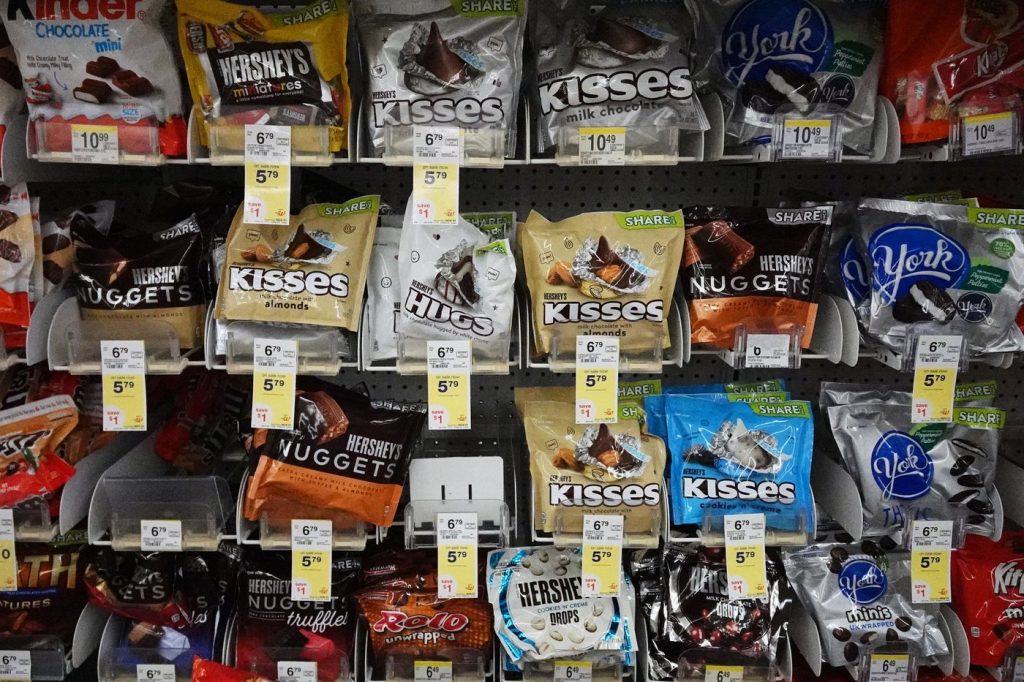Halloween, a season filled with ghouls, goblins, and an assortment of candy, is shaping up to showcase a noticeable shift in consumer preferences. This year, trick-or-treaters are likely to discover more non-chocolate candies in their haul, including fruity options like gummies and freeze-dried sweets. Younger consumers have shown a consistent tendency to favor these fruity alternatives over traditional chocolate treats, exemplifying a broader trend in candy consumption.
In the past year, chocolate comprised 52% of total Halloween candy sales in the U.S. However, according to market research expert Dan Sadler, that share significantly decreased to 44% in the 12 weeks leading up to October 5, 2024. This reduction could be influenced by rising prices. The global cocoa market has faced turbulence, with prices more than quadrupling between January 2023 and January 2025 due to unfavorable harvests in West Africa, where about 70% of the world's cocoa is sourced. Consequently, chocolate candies have become substantially more expensive. In the 12 weeks prior to October 5, chocolate Halloween candy averaged $8.02 per pound, in stark contrast to non-chocolate varieties, which averaged $5.77 per pound.
In total, Americans spent an impressive $7.4 billion on Halloween candy in 2024, which constituted 18% of overall candy sales for the year. This demonstrates the significant role that Halloween plays in the confectionery market. One of the giants in this industry, Mars Inc., produces around 30 million M&M’s each day at its factory in Topeka, Kansas, which specifically manufactures Halloween candy.
The stark rise in cocoa prices reached an all-time high of $10,710 per metric ton in January of this year. Although cocoa prices have seen a decline since then, market expert Sadler notes that it may take several months before consumers notice a reduction in candy prices due to these lower raw material costs. For context, if you were to align all the Snickers bars produced annually by Mars, you would stretch 1,254 miles, enough to make the journey from Topeka to New York seven times.
Consumer behavior reflects Halloween's unique purchasing trends. A report from Hershey indicates that 61% of U.S. consumers bought candy for trick-or-treaters last year, while 45% purchased Halloween candy for personal enjoyment. In terms of market presence, Hershey led the Halloween candy race with a commanding 40.8% market share. Its popular assortments, which include Reese’s, Kit Kat, and Almond Joy, were among the top sellers during the last Halloween season.
To prepare for the Halloween rush, Mars began rolling out Halloween candy to U.S. stores starting on July 5, highlighting the length of planning and logistics required for this seasonal production. In fact, it takes Mars approximately two years to strategize for a successful Halloween season.
Consumer buying patterns also provide valuable insights. On average, Americans purchase Halloween candy about 3.6 weeks prior to the holiday. However, Generation Z tends to start their shopping earlier, approximately 4.5 weeks ahead of Halloween. Notably, non-chocolate candy sales have seen a growth of 4.9% in dollar sales in 2024, compared to a modest growth of only 0.4% for chocolate candy.
This evolving market landscape reflects changing consumer preferences and price fluctuations, capturing the attention of both manufacturers and candy lovers as Halloween approaches.










